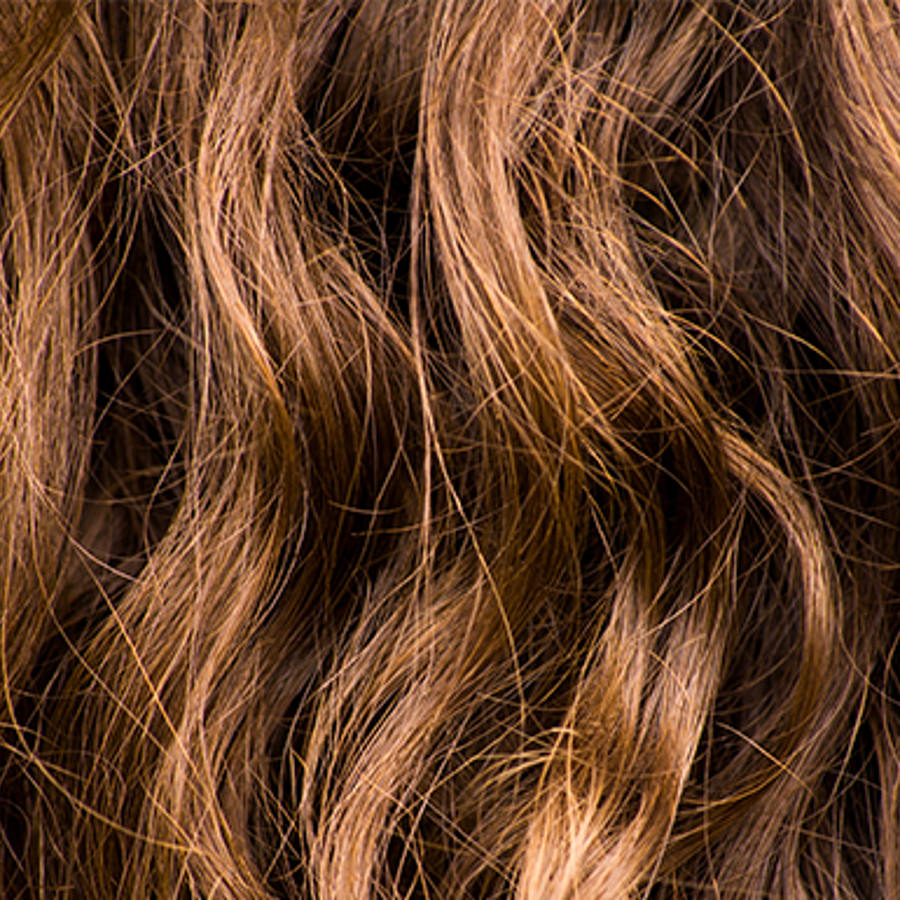
How are straight and curly hair inherited?
August 27, 2004

- Related Topics:
- Hair texture,
- Classical genetics,
- Common questions,
- Dominant and recessive,
- Pigmentation traits,
- Genetic myths
A curious adult asks:
“Can a couple (one with straight hair, one with curly) have one straight haired child and one curly haired, and one of the children has green eyes and the other blue? Both parents have green. Is this possible?”
Editor’s note (2/16/21): At the time this article was written, earlobe shape, hair texture, and eye color were described as simple traits caused by one (or two) genes. We now know that none of these are as predictable as described below. Instead, all are examples of complex traits, which are affected by many different genes plus environmental factors. The inheritance of these traits can be attributed to multifactorial inheritance, where traits are determined by a combination of many genes and environmental factors.
In addition, early genetic studies mainly looked at a few large families with European ancestry. That means those studies missed a lot of genetic variation that contributes to the wide diversity of traits seen around the world. For example, variation in the TCHH gene is often responsible for curly vs straight hair in people with European ancestry, while variation in the EDAR gene is often responsible for straight hair in people with Asian ancestry.
The quick answer is that it is possible for the couple you describe to have kids with blue or green eyes. (Although less likely, it is even possible to have a brown-eyed child.)
In terms of hair type, by the traditional sorts of theories that are out there, it isn't possible for a curly headed and a straight haired couple to have straight haired kids (or, by a strict definition, curly haired kids either!). Of course, genetics is always more complex than the traditional sorts of theories.
One way for the couple you describe to have a straight haired child is if the curly headed parent actually has wavy instead of curly hair. It may seem like a minor distinction but from a genetic point of view, the difference is critical.
Why would this distinction matter? Remember, that for most genes, you have two copies of each gene that you inherited from your mother and your father. For most "traditional" genes, there is a dominant and a recessive version. What this means is that if you have either one or two copies of a dominant version of a gene, you'll look like that gene. To look like the recessive version, you need two copies of the recessive form.
For example, with something simple like whether earlobes are attached or not, there are two versions (or alleles) of the ear lobe attachment gene. Free earlobe (G) is dominant over attached (g). What this means is that if you inherit a G version of this gene from either your mother or father, you will have free earlobes. To have attached earlobes, you need to get a g copy from both parents.
So, from a gene point of view (or genotype), both a GG and a Gg person has free earlobes and a gg has attached earlobes. So how does it work for hair type and eye color?
Neither hair type nor eye color works in this simple way. There are two versions of the hair type gene, curly (C) and straight (s). Hair type is an interesting case of something called incomplete dominance. What this means is that with hair type, if you have one of each version of the gene, you get a mix of the two or wavy hair. So for hair type, CC gives curly, Cs gives wavy and ss gives straight hair.

Back to your specific situation. As you can probably tell, the couple you describe could only have wavy haired kids. That is because the curly headed parents, CC, can only contribute a C gene and the straight haired parent, only an s gene. That means all the kids will be Cs and have wavy hair.
Of course, wavy and curly is in the eye of the beholder! If your curly headed person actually had wavy hair, he or she would be a Cs. A wavy haired person can contribute either a C or an s gene. If paired to a straight haired person (ss), then the kids would either have straight (ss) or wavy hair (Cs).
That is probably way more than you wanted to know! For eye color, I'll refer you to two questions we've answered previously. The first is a description of traditional eye color inheritance that will work well for your case. The second is a nice description about how the genetics rules are sometimes broken.

Author: Dr. D. Barry Starr
Barry served as The Tech Geneticist from 2002-2018. He founded Ask-a-Geneticist, answered thousands of questions submitted by people from all around the world, and oversaw and edited all articles published during his tenure. AAG is part of the Stanford at The Tech program, which brings Stanford scientists to The Tech to answer questions for this site, as well as to run science activities with visitors at The Tech Interactive in downtown San Jose.
 Skip Navigation
Skip Navigation
